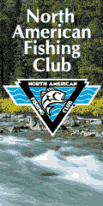
|
|||

Free 90 day Risk free trial offer click here Promotional Team Favorites Lodging food and more 
|
By Sam Anderson Crankbaits, shad baits, stick baits are all names that we give to
minnow imitators. Crankbait fishing has been very popular in the
South and the North for catching bass. Crankbaits can and do take
a lot of bass, northern pike, muskies, crappie, trout and of course walleyes.
Again, trolling or casting crankbaits will get the job done in a hurry. In stained or dirty water that has a lot of prey zip, that crankbait by them and they won't resist the active vibrations of a wounded minnow. Here is a tip to put in your bag of tricks. When casting crankbaits in a river or lake area that has rip-rap or even sharp points with weeds and other debris, cast your bait up into the cover or rocks and crank down until you get a taught line. Then pop the crankbait off the structure into the water. Bass fisherman have been doing this for years and it does produce walleyes in stained water or low light conditions such as mornings and evenings. You might lose some lures until you get the hang of this type of fishing but it is very effective for taking some trophy fish. Don't forget to check your line periodically to see if it has wear from the structure. Running depth is a factor that has many variables to consider. To determine where the fish are, look at your depth finder. You will want to put that lure in front of their face, not below them or too far above them, but right in the" strike zone". Usually the bigger the lip on the bait the deeper they dive, but don't overlook line diameter and length of line let out. If you want your bait to run at 8' depth then you will need to let out about 50' of 8lb test line. If you increase the diameter of the line the bait will ride higher in the water. If you increase speed the lure will dig deeper and then ride higher. Therefore, experiment with speed, line diameter and lip structure to see if the bait is getting down to the "strike zone". Walleyes often feed voraciously at night. The first-time night fisherman finds a new and unfamiliar world, which at first can be threatening and unproductive. But with proper equipment and background knowledge, night fishing adds a fascinating new dimension to fishing. Active walleyes hold above dense weeds, rock, or other cover; but they also roam more freely than during the day. Don't neglect areas with sparse cover that walleyes rarely visit during the day. Just because there may appear to be no cover does not mean that walleye are not roaming over the flats. Keep a constant eye on you depthfinder to see if you see any fish suspended. Because, on flats, large walleyes feed in a variety of depths, from just a few feet to the deep outer edges of the flat. Depending upon what's available to eat, walleyes may be on the bottom, suspended at mid-depths, or even at the surface gobbling mayflies or shad. Bait action again can be the triggering factor for many a finicky walleye, northern pike and bass. In cold clear water use a slow wobble and slow retrieve or trolling speed. In warmer water, tight action and increased speed will increase your chances of a larger fish. Check your action when you attach your lure to the line. Run the lure along side the boat to see if it has a tight or slow wobble. Many baits can be tuned to run true by bending the nose ring on the bait. This will allow the bait to run in the correct path behind the boat. Be a change up person. Don't stick with one bait all the time. Try different colors, presentation, size, rattles and added weight. So many fishermen tend to stay with old methods that have worked before and fail to boat fish. If you would like to discuss this method or let me know where they are biting, drop me a line on the web at www.samanderson.com Fish Clix Banner Exchange Please visit these site sponsors |
||
|---|---|---|---|
